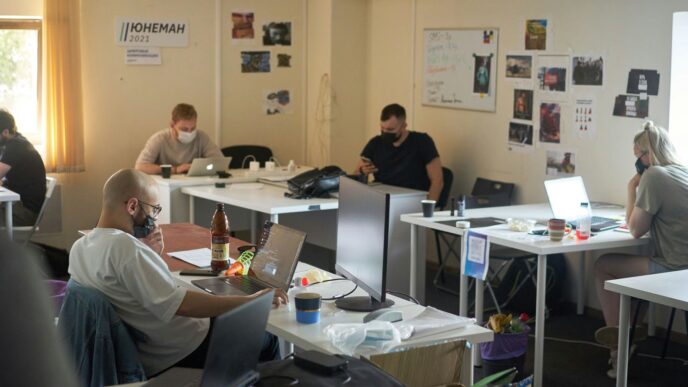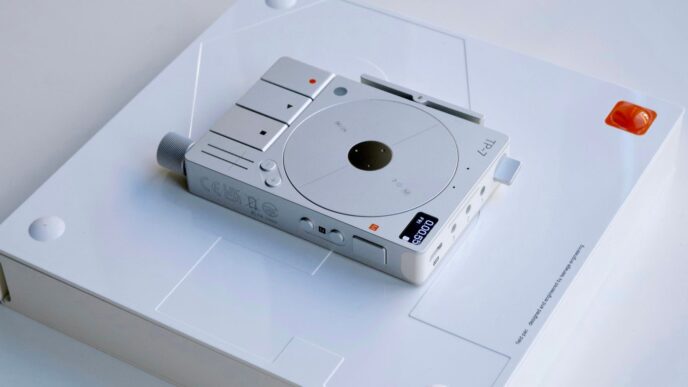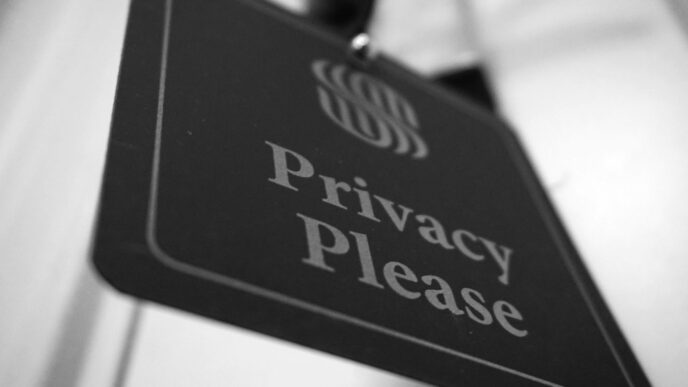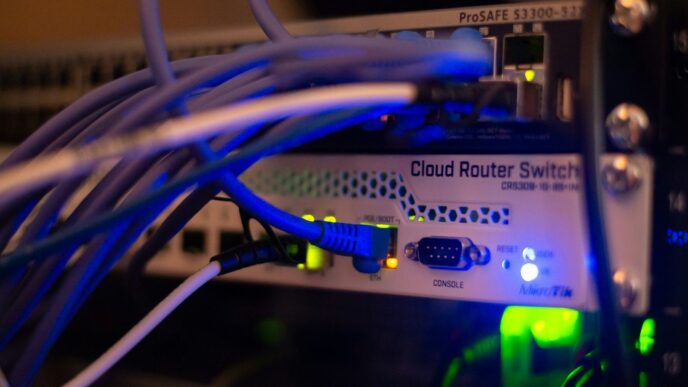Fast Company covers are more than just magazine pages; they’re like a visual diary of what’s new and exciting. This article takes a look at how these covers show off cool ideas and the people behind them, especially when Fast Company puts on its big innovation festival. It’s a neat way to see how they talk about business, tech, and culture through pictures.
Key Takeaways
- Fast Company uses its magazine covers to highlight big ideas and important people, especially at its innovation festival.
- The covers often show themes like staying positive, new tech, and recognizing leaders in different fields.
- The festival brings these covers to life with interactive displays and sponsor activities that connect with attendees.
- Fast Company’s approach to storytelling has changed, moving from just print to creating full experiences.
- The magazine features a wide range of individuals, from business minds and artists to athletes, all pushing boundaries.
Showcasing Innovation Through Fast Company Covers
A Visual Gallery of Past Issues
Walking into the festival hub, you’re immediately greeted by a striking display: a gallery of oversized magazine covers from past issues of Fast Company. It’s like a visual timeline of innovation, showing how the magazine has captured the pulse of groundbreaking ideas over the years. These covers aren’t just pretty pictures; they’re snapshots of moments when new technologies, leadership styles, or creative breakthroughs were making waves. It’s a really neat way to see the evolution of what’s considered cutting-edge. You can spend a good chunk of time just looking at them, remembering when certain trends first emerged or when specific companies first hit the scene.
The Festival Hub’s Cover Display
The display itself is more than just a wall of magazines. It’s designed to be an immersive experience. Think of it as a physical manifestation of the forward-thinking content that Fast Company is known for. The sheer scale of the covers makes you stop and take notice. It sets the tone for the entire event, reminding everyone that they’re in a place dedicated to exploring the future and celebrating those who are building it. It’s a constant visual reminder of the magazine’s legacy and its ongoing commitment to highlighting innovation across various fields.
Themes Explored in Fast Company Covers
Fast Company covers aren’t just pretty pictures; they really try to capture what’s happening in the world of business and ideas. It’s like they’re picking out the biggest trends and the people making them happen, then putting it all on the front page.
Leading With Optimism: A Timely Message
Sometimes, the covers really hit you over the head with a specific feeling or idea. For instance, one recent theme was all about "Leading With Optimism." This wasn’t just some fluffy feel-good stuff. It was a direct response to what was going on in the world – you know, all the political and cultural noise. The idea was that even when things seem tough, businesses and leaders need to step up. They need to guide their teams with good values and actually invest in moving forward, especially in areas where maybe the government isn’t doing as much. It’s about finding that positive path, even when it’s hard.
Innovation in Business and Technology
This is pretty much Fast Company’s bread and butter, right? A lot of covers focus squarely on new ideas in how we do business and the tech that’s changing everything. You’ll see companies that are totally shaking things up, whether it’s a startup with a wild new app or a big corporation that’s figured out a smarter way to work. They highlight the breakthroughs that are making things more efficient, more connected, or just plain cooler. It’s a constant look at what’s next and who’s building it.
Spotlighting Leadership and Entertainment
It’s not all just about spreadsheets and code, though. Fast Company also shines a light on the people behind the scenes and the cultural forces shaping our lives. You’ll find covers featuring leaders who are doing things differently, not just in business but in other fields too. And then there’s the entertainment side – the creators, the artists, the storytellers who are innovating in their own ways. They show how creativity and smart leadership can come from all sorts of places, not just the usual corporate towers.
Interactive Elements Inspired by Fast Company Covers
This year’s Fast Company Innovation Festival really went all out to make sure attendees weren’t just passively observing, but actively participating. It felt less like a stuffy conference and more like a dynamic playground for ideas. The goal was to turn the magazine’s innovative spirit into tangible experiences.
Engaging Attendees with Digital Walls
Forget boring bulletin boards. We saw some seriously cool digital walls that pulled in real-time social media chatter about the festival. It was a neat way to see what everyone was talking about and feel like you were part of the bigger conversation. Then there was 3M’s Wonder Wall, which was pretty neat. It had this digital "rainfall" effect, and when you moved your body in front of it, you could interrupt the falling water, making these colorful shapes appear. It was a fun, unexpected way to interact with a brand.
Sponsor Activations and Branding
Sponsors weren’t just slapping their logos on everything. They got creative. Shell had this food truck where you could literally "jump for your lunch" on these pads that measured how much energy you generated. It was a clever way to show off their energy innovations. Bumble Bizz set up a "Hive Pollination Station" offering one-on-one mentoring sessions with business leaders, which felt genuinely helpful. It was all about creating memorable moments, not just handing out pens.
Connecting Community Through Content
Beyond the flashy displays, there were also opportunities to connect. Bumble Bizz’s station offered mentoring, which is a great way to build connections. They also had "Purposeful Networking" sessions, which were basically guided conversations designed to help people connect more authentically. It showed they were thinking about how to bring people together, not just how to show off cool tech. It’s all about making sure attendees leave with more than just a swag bag; they leave with new ideas and new contacts.
The Evolution of Fast Company’s Visual Storytelling
From Print to Immersive Experiences
Fast Company has really changed how it tells stories over the years. It started out as a magazine, right? Just like most publications back then, the focus was on the printed page. You’d see these bold covers, often featuring a single, striking image and a few key headlines. It was all about grabbing your attention on a newsstand. But as time went on, and especially with events like the Innovation Festival, they started thinking bigger. They moved beyond just the flat page to create actual experiences. Think about it: instead of just reading about innovation, attendees could walk through a gallery of past covers, seeing the visual history of the magazine right there in front of them. It’s like taking that static image and making it come alive, giving people a chance to really feel the energy of the brand.
Art Direction in Festival Design
When you go to an event like the Fast Company Innovation Festival, the look and feel of the place matters. It’s not just about the speakers or the topics; it’s about the whole atmosphere. The art direction plays a huge role in that. They’ve got people like Katie Flanagan and Carly Stern, who are art directors for Fast Company, working to make sure everything fits the brand’s image. They design things like the branding for sponsor booths or interactive walls. It’s about making sure that even the sponsor activations, like Bumble’s Hive Pollination Station or Shell’s food truck, feel like they belong there and aren’t just random ads. They want these elements to surprise and delight people, making the whole experience feel more connected and less like a typical conference. It’s a smart way to keep the brand’s visual identity consistent across all the different parts of the event.
Reframing Brand Perception Through Activations
This is where things get really interesting. Fast Company isn’t just putting on an event; they’re using it to change how people see brands, including their own. They work with sponsors to create these unique, interactive setups. Take the 3M Wonder Wall, for example. It wasn’t just a screen; it had this cool "rainfall" effect where people could move their hands and change what was on the screen. Or Shell’s food truck, where you could literally jump to generate energy for your lunch. These aren’t your typical sponsor booths. They’re designed to be memorable and engaging. By doing this, they’re not only giving sponsors a cool way to connect with attendees but also showing off Fast Company’s own innovative spirit. It’s a way to make the brand feel more dynamic and forward-thinking, not just a magazine but a whole experience. It helps attendees see these companies, and Fast Company itself, in a new light.
Key Figures Featured on Fast Company Covers

Fast Company’s covers are more than just pretty pictures; they’re a snapshot of who’s making waves. They’ve featured a whole range of people, from the folks running big tech companies to artists and athletes who are changing the game. It’s like a who’s who of innovation, really.
Innovators in Business and Tech
When you flip through past issues, you’ll see a lot of familiar faces from the business and tech world. These are the people behind the companies that are shaping how we live and work. Think CEOs, founders, and lead engineers who are pushing boundaries. They’re often featured for their groundbreaking ideas or how they’ve managed to turn a concept into a successful business. It’s inspiring to see how they approach challenges and build the future. For example, the magazine often highlights leaders from companies that have won awards for their groundbreaking projects.
Cultural Icons and Creators
But it’s not all about spreadsheets and code. Fast Company also shines a light on people in entertainment and culture. You might see actors, musicians, writers, or directors who are using their platforms to create something new or bring attention to important issues. These individuals often bring a unique perspective, showing how creativity and business can intersect in interesting ways. They demonstrate that innovation isn’t just confined to the corporate world.
Athletes and Visionary Leaders
And then there are the athletes and other visionary leaders. Athletes, for instance, often embody discipline, strategy, and the drive to perform at the highest level – qualities that resonate deeply with the spirit of innovation. Fast Company has featured sports figures who have not only excelled in their fields but have also used their influence to make a broader impact. These covers remind us that leadership and a forward-thinking mindset can come from anywhere, pushing us all to think bigger.
Wrapping It Up
So, looking back at these Fast Company covers, it’s pretty clear they’re not just pretty pictures. They’re like snapshots of what people are thinking about when it comes to new ideas and how businesses are changing. It’s interesting to see how the magazine picks its topics, often tying into big events or new trends. They even have this big festival where they bring a lot of these ideas to life with speakers and interactive stuff. It seems like they really want people to feel connected and inspired, not just read about things. It’s a good reminder that innovation isn’t just about the next big gadget; it’s about how we approach problems and lead with a positive outlook, even when things are tough. Pretty neat stuff, really.
Frequently Asked Questions
What is the Fast Company Innovation Festival?
The Fast Company Innovation Festival is a big event where people interested in new ideas and how businesses work come together. It’s like a week-long party with lots of talks, workshops, and chances to see cool companies.
What kind of topics does Fast Company cover?
Fast Company talks about all sorts of exciting things! They cover how businesses are coming up with new ideas, the latest in technology, how leaders are doing a great job, and even what’s happening in entertainment.
What was the main idea or theme of the recent festival?
The most recent festival was all about ‘Leading With Optimism.’ This means focusing on being positive and hopeful, especially when things in the world feel a bit tough. It’s about leaders and companies making good choices and helping others.
Who usually appears on the Fast Company magazine covers?
You’ll often see covers featuring people who are changing the world with their ideas. This includes smart business leaders, creative artists, famous athletes, and anyone who is showing us a new way of doing things.
How do sponsors get involved in the festival?
Companies that sponsor the festival don’t just put up signs. They create fun and interactive things for people to do, like special food trucks or digital games, so attendees can learn about their new ideas in an exciting way.
What’s the goal of the festival’s visual displays, like the magazine covers?
Showing past magazine covers is a way to celebrate the history of innovation that Fast Company has covered. It’s like a visual story that reminds everyone of all the amazing ideas and people featured over the years.














